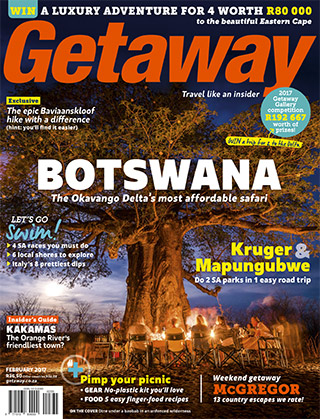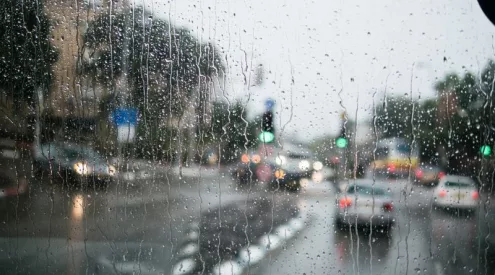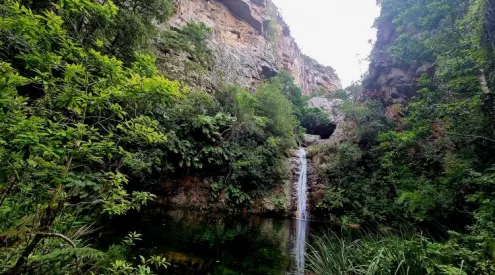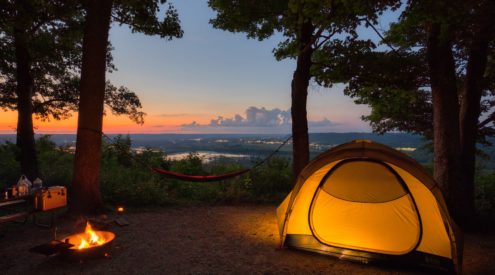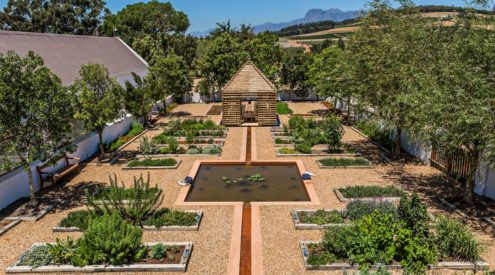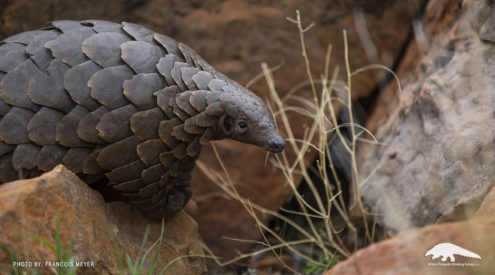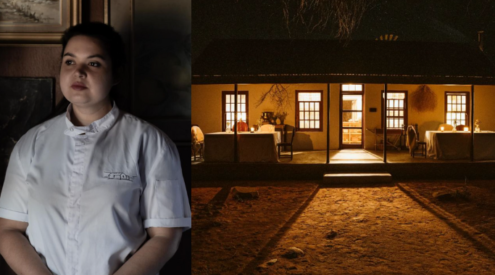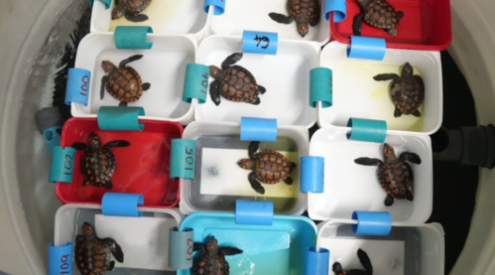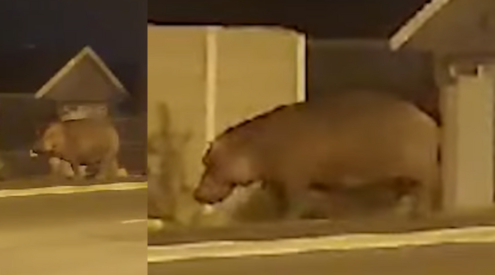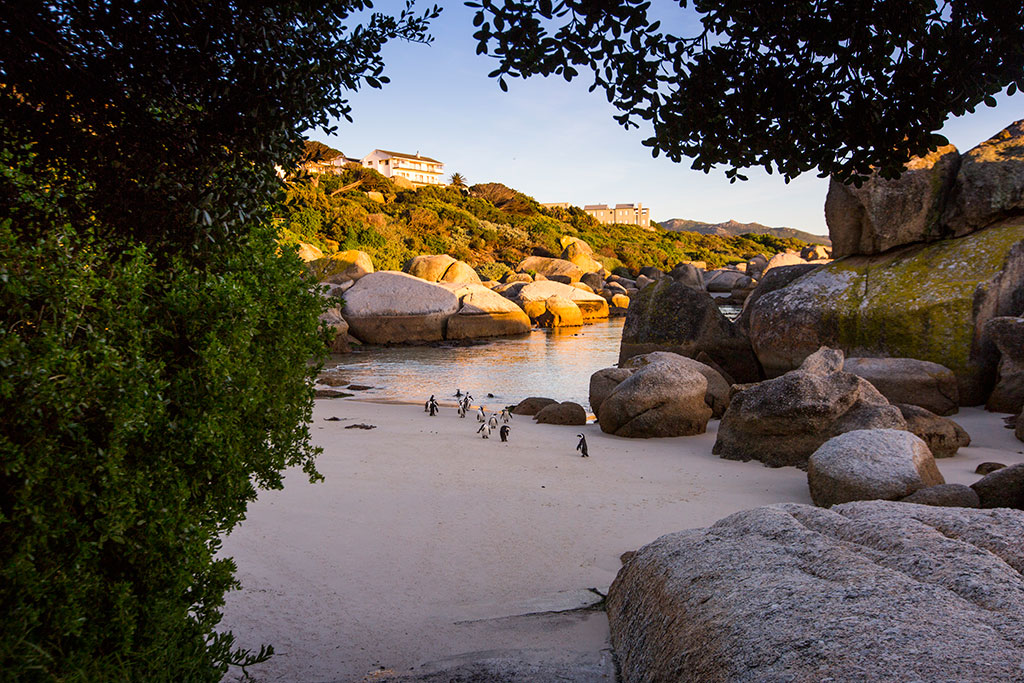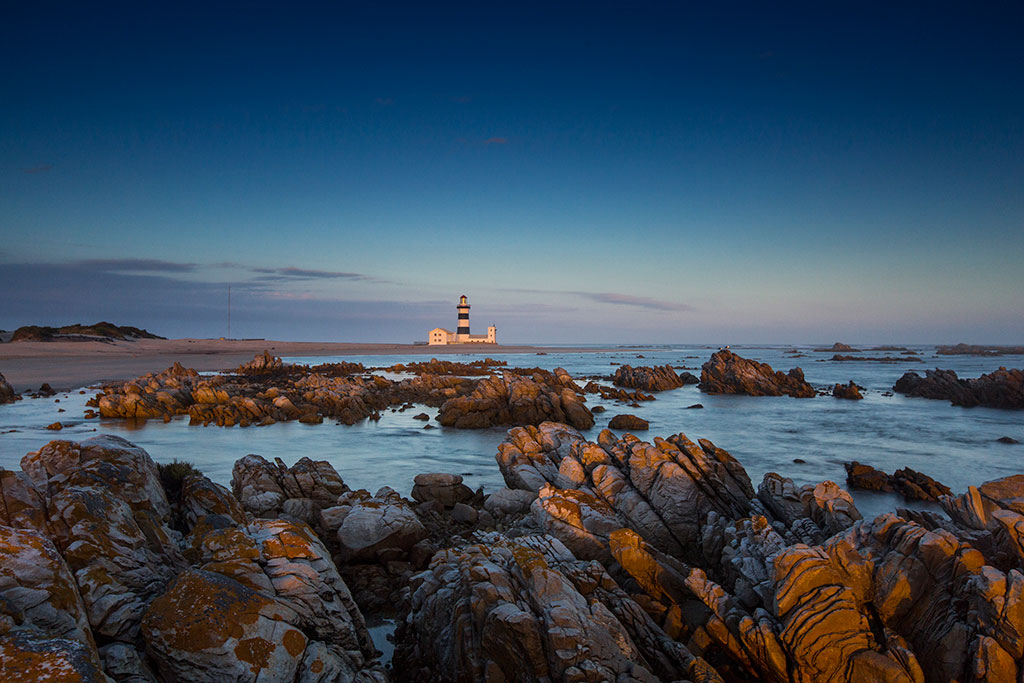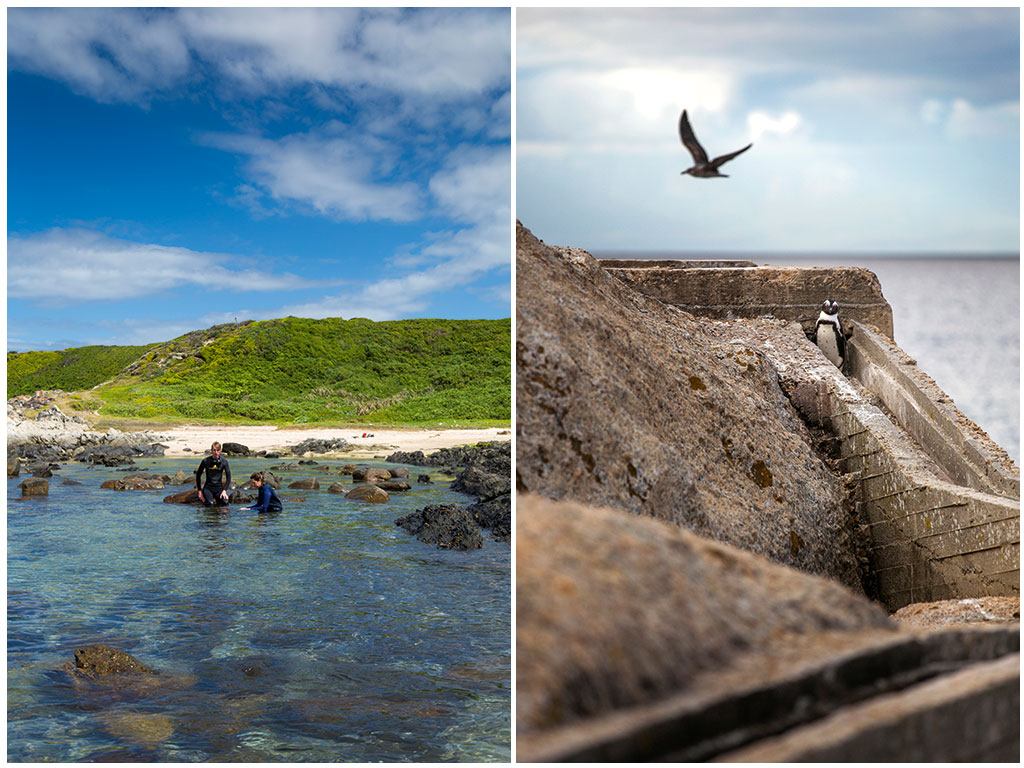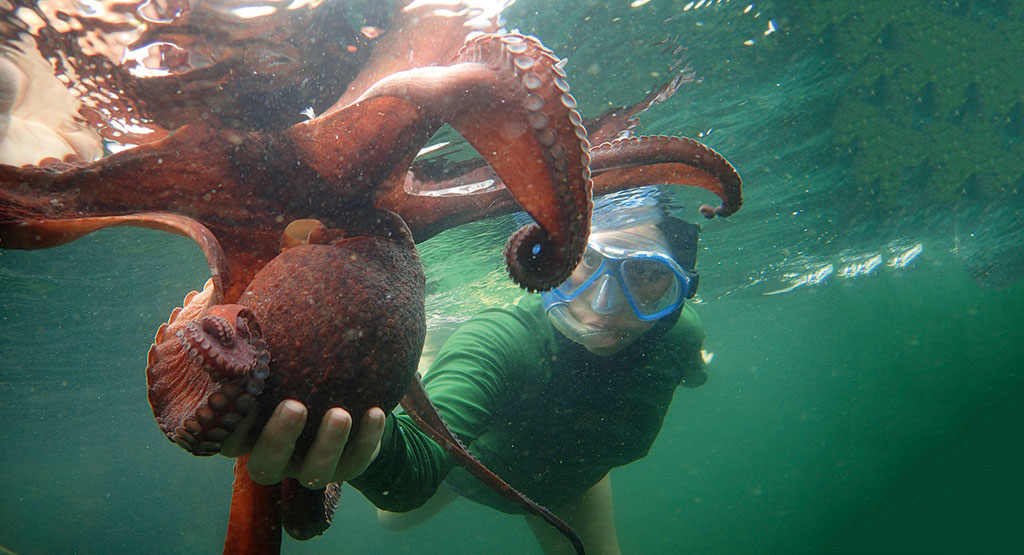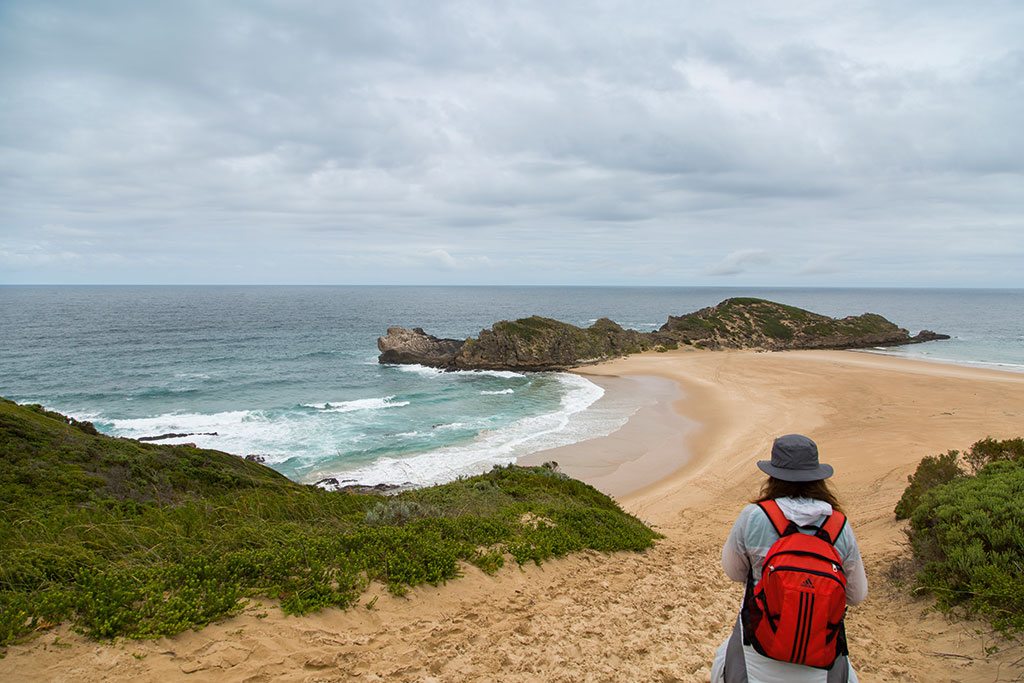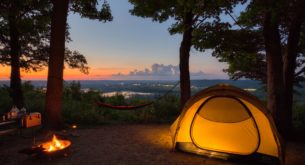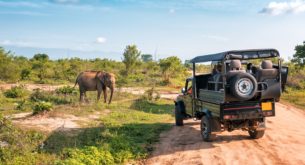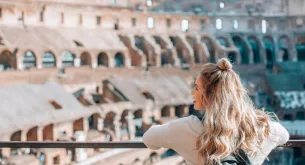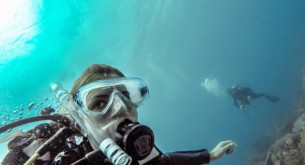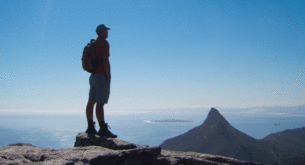Hope spots are the ultimate call for citizens to engage with the ocean, to care for it, to make out own. South Africa has six spots. We visited some of them. Photographs by Teagan Cunniffe.
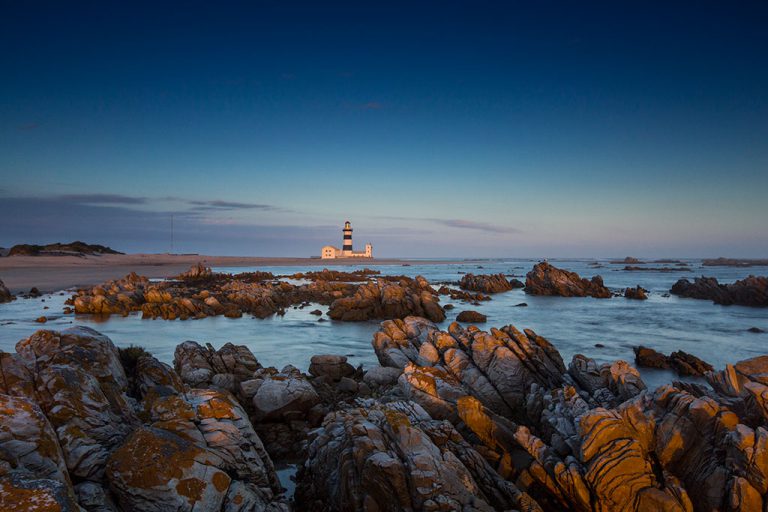
Cape Recife Lighthouse from the beach is part of the Algoa Bay Hope Spot. The Samrec Penguin Rescue Station is close by. Image by Teagan Cunniffe
When oceanographer Dr Sylvia Earle sleeps, I like to imagine she dreams in pale blues and greens, teals, turquoises, cobalts, indigos, sapphire, silvers, and royal and midnight blues so rich they’re almost black. She’s been diving since the age of 16. She’s now 81. Every year, even now, Dr Earle travels up to 480000 kilometres to dive in research sites around the world. She has spent more than 7000 hours underwater. She was dubbed ‘Her Deepness’ by The New Yorker.
Her Deepness says she is often asked this question: Where’s the best place to go diving?‘Almost anywhere,’ she replies, pausing. ‘Fifty years ago.’ She would know, but there’s evidence to support her view; coral reefs are dying, we’ve eaten 90 percent of the big sea fish*, plastic is contaminating our oceans, and and and… Yet, there is still hope, says Dr Earle. And so, in 2009, she launched the Hope Spot concept.

False Bay Hope Spot has plenty of pools to explore sea life; Hope Spots are not only about the sea life but the entire coastal ecosystem. Images by Teagan Cunniffe
In South Africa, our seas are off-the-charts beautiful. We have 24 Marine Protected Areas (MPAs), and in 2014 six Hope Spots were declared. These are special conservation areas critical to the ocean’s health, often close to MPAs but not necessarily part of them. According to the Sustainable Seas Trust (SST), less than three percent of the sea is protected compared to the land, where 12 percent is safeguarded in the form of national parks or heritage sites. Hope Spots are another driver in the fight to create that equivalent in the ocean. They are still, to some degree, an ephemeral concept, existing primarily by name, their borders demarcated, but there’s not much beyond this to protect them. However, in South Africa, to our great credit in my opinion, after two years they’re being shaped into something more concrete, more robust, more suited to our unique situation.
South Africa’s go-to Hope Spot man is Dr Tony Ribbink, resident of Kenton-on-Sea and head of SST, which coordinates the Hope Spot project here. Our six spots are Algoa Bay, Plettenberg Bay, Aliwal Shoal on the KZN coast, the Cape Whale Coast, False Bay and Knysna. Around the world, Hope Spots are nominated by citizens; they’re vetted and approved by Mission Blue, the organisation set up by Dr Earle. But in SA, the process was more rigorous, involving committees and strict criteria.
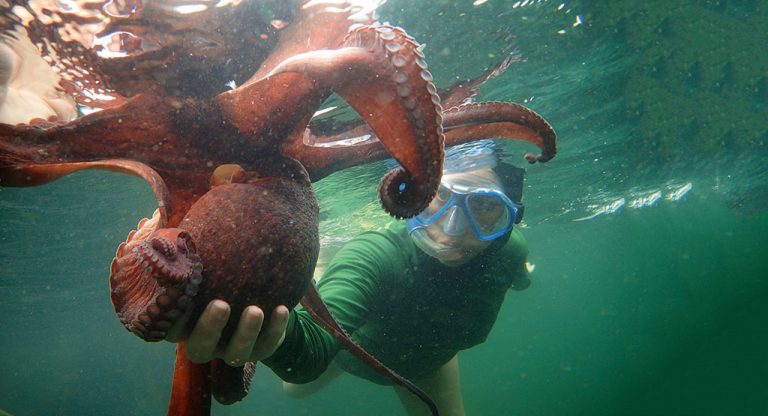
I meet an octopus – this should only ever be done with qualified people who know how not to harm sea life (or even yourself). Image by Teagan Cunniffe
What sets our Hope Spots apart is that, unlike those in other countries, SA’s are always close to human settlements. The reason for this is that people are fundamental to the ocean’s survival, says Dr Ribbink, and so we should be encouraged to engage with these beautiful marine areas, not warned off them. ‘The real issue is that people are encouraged to play a positive role. Hope Spots provide that opportunity in the hope that they’ll ignite support through personal involvement,’ he explains. In South Africa, the issues are also more complex because there are systemic societal issues – economic and social justice, for instance – that need to be addressed if we want to foster conservation ethics.
‘If you’re unemployed and have no job, then you have no self-esteem and you don’t care what’s around you,’ says Dr Ribbink. The long-term goal is that, by making Hope Spots a recognised brand and getting operators and tourism bodies to come on board, they can boost ‘blue’ tourism. The aim is now to employ someone to put that into action. Beautiful areas attract tourists, who will be able to choose accommodation, service providers and tours that are Hope Spot registered. These will provide much-needed revenue, while inviting locals to engage in their coastlines and shores more intimately may make them, to put it simply, fall in love and want to protect these precious resources. The key, though, is connection with the ocean.
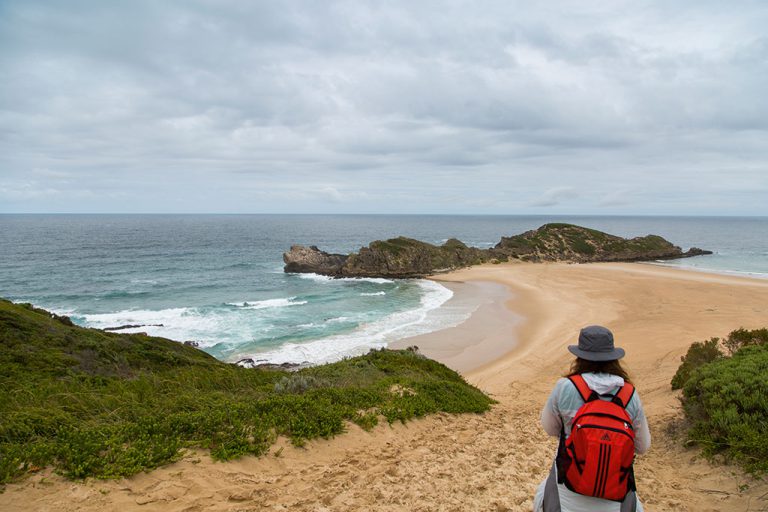
Robberg Nature Reserve, which is part of the Plett Hope Spot, is undoubtedly one of the most beautiful places to explore, and picnic. Image by Teagan Cunniffe
The first time I met an octopus was in a Hope Spot. He/she was introduced to me by Hope Spot ambassador Craig Foster, a well-known documentary maker who has been swimming in the False Bay Hope Spot every day for three years. An octopus is an uncanny creature. It doesn’t live for very long, and is recognised by biologists as a sentient being. It settled firmly but softly onto my leg and took a good long look at me with goatlike eyes. It was probably trying to figure out how to unscrew my head – they’re very good at undoing bottle tops – but its focus impressed me nonetheless. Seeing a creature in its environment, its home, and learning about it, is a powerful experience, one that settles in deep. Of course, those who’ve been diving knew this long ago, but not all of us dive. However, it’s easy to engage with sea life along our shores. Anyone can do it. And this is the point of Hope Spots.
What’s amazing about Algoa Bay, remarks Dr Ribbink, is that according to tour operators, more people outside of Port Elizabeth know about the incredible natural riches the area has to offer than locals do. In fact, it’s so rich that Nelson Mandela University (NMU) is becoming a hub for maritime research of all kinds.In Plettenberg Bay we visited Robberg Nature Reserve, just one of the many options to explore in this Hope Spot. It was drizzling when we started our hike, and the plants sparkled like crystals. We stopped above the seal colony and watched them play out, on the rocks, some toppling into the green water, while mousebirds flitted in the vegetation below.
‘We have an amazing life here,’ agrees Dr Gwen Penry, a marine mammal scientist currently doing post-doctoral research at NMU. She heads up the committee for the Plett Hope Spot committee for the Plett Hope Spot. At this stage, she says, in each spot conservationists make of it what they can. In Plettenberg Bay, they work on making sure the marine environment is kept in the public eye through a public lecture series, where researchers share their findings. ‘The whole concept of Hope Spots is that it’s self-generated, driven by the individual,’ she says. ‘It should be coming from within the community that we should be protecting this valuable resource, but we need to let people know why it’s important.’
Recently, a coastal corridor was declared from Robberg to Kranshoek, which means that caracal and leopard – yes, leopard – are able to move along the coast through these areas. As Dr Penry works through a list of life in this stretch of land and sea she paints a picture of incredible environmental richness: caracal, leopard, 7000 Cape cormorants, the largest kelp gull breeding colony in the country, African penguins, southern right whales, humpback and Bryde’s whales, bottlenosed and humpback and common dolphins, and then birds too many to name. As a visitor, I have seen only a fraction of what she’s described. In Algoa Bay it was the same, as in the False Bay Hope Spot. There is so much wilderness for us to tap into.
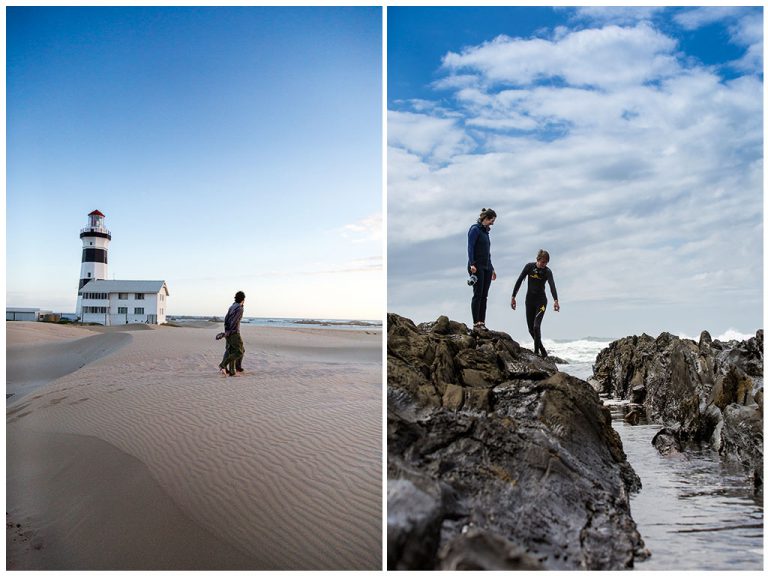
Cape Recife Lighthouse; There is so much to discover right on the shore, in rock pools. It’s a great place for kids to learn – just remember to be gentle and do no harm. Images by Teagan Cunniffe
Back home, I buy a young friend a gift of a snorkel and mask for his birthday, and make a date with him to go to the False Bay Hope Spot. I hope that there he might see colourful sea anemones, perhaps even an octopus. I hope we’ll have fun and, like me, he’ll fall in love with, as Dr Earle calls it, the big blue heart of our planet, and that he’ll be moved to care for it. Because that’s the point of this Hope Spot movement, after all: what happens to our ocean is up to us.
What are SA Hope Spots?
Hope Spots are marine areas of ecological and biodiversity significance, but in South Africa, they are also unique in that:
• they are the only community-based Hope Spots;
• they are where people live, and aim to involve those people in conservation;
• they aim to ignite human support through involvement and education;
• they aim to share information with people so that everyone can appreciate the enormous value of the seas on their front doorstep and to then promote pride.
To see where Hope Spots are located around the world, go to mission-blue.org
Getting there
Drive from Cape Town to Port Elizabeth along the N2, which will take you past three Hope Spots: the Cape Whale Coast, Knysna and Plett. To Algoa Bay (PE), it’s around 750km, so a route including all four Hope Spots makes for a wonderful road trip. I would suggest two nights in each place, allowing you one full day to explore each coastal area. Alternately, fly to Port Elizabeth and drive to Plett and Knysna. From Cape Town, flights start at around R1500, from Joburg around R1600.
Need to know
Some Hope Spots are more active than others: Plett, Algoa Bay and Cape Whale Coast are probably the strongest. Many places have lots of options to interact with the sea. Otherwise, it’s simply a case of getting your hands, um, wet. In each place, start here: go down to the beach, take your mask and snorkel, and binocs, and see what comes your way. Explore. But remember, first do no harm – don’t pick things off the rocks or out of the sea.
Do this beforehand
Start by watching Mission Blue, the documentary of Dr Sylvia Earle’s quest to safeguard the sea. It’s great for the whole family. On Netflix.
Do this in Algoa Hope Spot
Visit the Samrec Penguin Station. The SA Marine Rehabilitation and Education Centre is great for kids especially. You can see cool things such as whale baleen, and penguins and sea birds. Feeding time is at 2.45pm every day. Entry R30 adults, R20 children. samrec.org.za
Explore Algoa Bay in a superduck. The Blue Pearl is owned by Morven Maclean, Algoa Bay HS member and Noordhoek Skiboat Club chairman. It’s the go-to research vessel but is also for hire to explore the bay and the wild side, the rougher Noordhoek seas. It’s launched from the boat club. From R250 per person. 0834093582
Take a catamaran trip. Offered by Stampede Cruises, owner Rod Lochhead grew up sailing in the bay. We went to St Croix, a rocky outcrop full of African penguins and other birdlife, and also saw dolphins. Fishing is not allowed (it’s a no-take zone). From R250 per person; R750 per person to St Croix. stampedecruises.co.za
Take an eco-horseride. Cantering through the twisting, bush-wrapped paths leading towards the beach is a game of balance and trust in your horse. Part of the trail takes you along the coast. Riding in a MPA is a privilege, and the local Riders Association works hard to control riding access and minimise environmental impact. Book through Heavenly Stables for all levels. R450 per person for two and a half hours. heavenlystables.co.za
Go whale watching. Raggy Charters is the only licensed boat based permit holder for this in PE. Tours start from R1400 per person. raggycharters.co.za
Beaches to explore
Sardinia Bay has kilometres of unspoilt coastline and is also a great spot for picnicking. It’s a marine reserve, so no fishing, but you’re allowed to snorkel.
Seaview is a rocky shore but has plenty of rock pools to explore, especially at low tide. There are also often dolphins there.
Cape Recife Beach is where you’ll find the lighthouse on a stark and beautiful beach. It’s good for walking with plenty of birdlife; it’s also close to the Samrec Penguin Station.
For more information, follow Algoa Bay Hope Spot on Facebook and visit nmbt.co.za.
Do this in Plett Hope Spot
Attend a marine lecture. This happens about once a month, and is usually researchers sharing their findings. R20 per person. Details on Facebook.
Visit Robberg Nature Reserve. There are a number of hikes you can do here. One takes you past a seal colony and another of Cape cormorants. It’s a gorgeous reserve, wonderful for bird and whale and dolphin watching in season. R80 per person. capenature.co.za
Swim with seals and pelagic sharks. Offshore Adventures is a recommended operation for snorkelling with these playful creatures – suitable for kids – and adults can also brave the sardine migration or swim with sharks. From R350 per person to view, R600 per person to swim. offshoreadventures.co.za
Go whale watching. Ocean Blue Adventures is one of two operations permitted to do the above in the bay. From R440 per person. oceanadventures.co.za
Ocean Safaris is another option for marine tours. From R450 per person; R250 per person 12 and under. oceansafaris.co.za
Do an eco-tour by kayak. Dolphin Adventures explores sea life along the coastline from their stable sea-level craft. From R300 per person for about two hours. dolphinadventures.co.za
Get your kids into this nature programme. Nature’s Valley Trust runs several educational programmes during the year that kids can participate in, activities start at R20. Events are posted on Facebook. naturesvalleytrust.co.za
Beaches to explore
Lookout Beach is a walk from the car park at Lemongrass restaurant to the Keurbooms River mouth and around the edge of the lagoon. Breeding seabirds nest here, keep dogs on leads.
Poortjies beach is on the edges of the Keurbooms estuary. Watch hermit crabs scuttle away from you, or hire a SUP board and explore further.
Arch Rock is a ‘path less travelled’ and there are beautiful rock pools and caves to explore. Park at Enrico’s restaurant in Keurbooms village and walk east.
For more information, follow Plett Hope Spot on Facebook and visit plett-tourism.co.za.
Do this in Cape Whale Coast Hope Spot
Go diving. There are two operators to use: Neptune’s Divers, which has a catamaran and young vibey crew. Costs start at R400 per person (for an eco-tour); dives from R1100 for two tank dives. neptunesdivers.co.za
Scuba Africa specialises in diving and training. Costs from R400 per person for a dive, and R400 per person for gear rental. scubaafrica.com
Watch whales. Southern Right Charters starts operating in June. From R800 per adult, and R380 for childrens. southernrightcharters.co.za
Beaches to explore
Walker Bay is part of a nature reserve and stretches from Klein River to Gansbaai. It’s a blue flag beach and the sea is wonderfully clear there, and in season there are lifeguards (and a bar). There are also sheltered nooks in which you can safely snorkel, and coastal caves to explore. We saw plenty of birdlife, too. capenature.co.za
The Old Harbour in the centre of Hermanus has a small beach that goes down to a stunning snorkelling area. There’s great biodiversity here.
For more information, follow Cape Whale Coast Hope Spot on Facebook (there’s a lot to do in this area, and the group is pretty good at responding to queries) and visit hermanustourism.info.
Stay here
In Algoa Bay
The Red Shed, on the outskirts of Port Elizabeth, is on a family farm bordered on one side by coastline, much of which has been left untouched. The building is like a glass box, large and roomy and opens wide onto a lush, green garden filled with birdlife; there’s also a tennis court. It lends itself to large, intimate gatherings. Although be aware it’s all open-plan sleeping. There are two separate bathrooms. From R900 (sleeps 10). airbnb.com/rooms/9120180
In Plettenberg Bay
Alkantmooi is set high atop a hill on a private nature reserve, which means it’s surrounded by indigenous forest full of life (apparently leopard have been recorded in the forest). There are seven units in total, four of them new, all with fully kitted kitchens. It’s an upmarket offering, with quality linen and spacious showers (toilet sensibly separate). The older Keursee units face a spectacular view over Plettenberg Bay’s sea, while Keurboom faces the forest. It’s a real plus to be outside the town; from here you’re a short drive to the Keurbooms river and many lovely beaches. Costs from R1500 per unit. alkantmooi.co.za
Read more from this story in the February 2017 issue of Getaway magazine.
Our February issue features a wild new way to traverse the Baviaanskloof, the Okavango Delta’s most affordable safari, 6 local shores to explore and Italy’s 8 prettiest dips.
